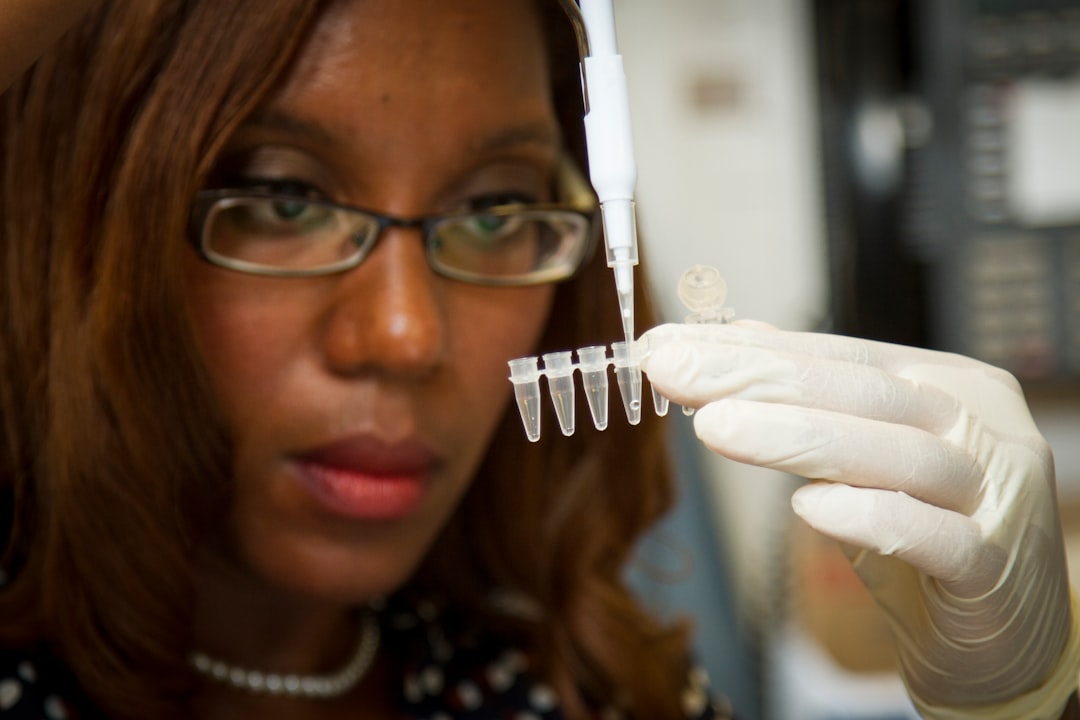What is it about?
This research focuses on the bacteriostatic (bacterial growth-inhibiting) effects of titanium dioxide (TiO2) photocatalytic reactions on Escherichia coli (E. coli). The study compares the effectiveness of TiO2 thin films prepared by two different methods: sol–gel dip-coating (SG) and low-temperature spray-coating (SP). These films were tested under low-intensity UVA light-emitting diodes (LEDs) for their ability to inhibit the growth of E. coli in nutrient broth and saline solution. The physical characteristics of the TiO2 films, including crystalline structure, bandgap energy, and hydrophilicity, were also analyzed. The bacteriostatic activity was evaluated by examining viable cell counts, cell morphology, and bioluminescence-based adenosine triphosphate (ATP) tests. [Some of the content on this page has been created by AI]
Featured Image

Photo by CDC on Unsplash
Why is it important?
The study is significant due to the growing need for effective antibacterial technologies, especially against pathogens in aquatic environments. Traditional methods often involve high costs, operational challenges, and potential carcinogenic effects. This research offers a potential alternative by using photocatalytic reactions, which are known for their deodorization, disinfection, and decontamination applications. The use of TiO2 and UVA LEDs is notable for its low toxicity, cost-effectiveness, and energy efficiency. Understanding the efficiency of different TiO2 film preparation methods and their bacteriostatic capabilities is crucial for developing more effective antibacterial strategies in various environmental conditions. KEY TAKEAWAY: TiO2 photocatalytic reactions effectively inhibit E. coli growth, offering a promising, eco-friendly antibacterial technology. This research relates to the following Sustainable Development Goals: • SDG 6: Clean Water and Sanitation • SDG 3: Good Health and Well-being • SDG 9: Industry, Innovation, and Infrastructure • SDG 14: Life Below Water
Read the Original
This page is a summary of: E. coli Bacteriostatic Action Using TiO2 Photocatalytic Reactions, International Journal of Photoenergy, August 2018, Hindawi Publishing Corporation,
DOI: 10.1155/2018/8474017.
You can read the full text:
Resources
SDG Showcase: Goal 6 – Clean Water and Sanitation
More plain language summaries of research relevant to Sustainable Development Goal 6: Clean Water and Sanitation – brought to you by the SDG Knowledge Cooperative
SDG Showcase: Goal 3 – Good Health and Well-Being
More plain language summaries of research relevant to Sustainable Development Goal 3: Good Health and Well-Being – brought to you by the SDG Knowledge Cooperative
SDG Showcase: Goal 9 – Industry, Innovation and Infrastructure
More plain language summaries of research relevant to Sustainable Development Goal 9: Industry, Innovation and Infrastructure – brought to you by the SDG Knowledge Cooperative
SDG Showcase: Goal 14 – Life Below Water
More plain language summaries of research relevant to Sustainable Development Goal 14: Life Below Water – brought to you by the SDG Knowledge Cooperative
SDG Knowledge Cooperative
More plain language summaries of research relevant to all the Sustainable Development Goals.
Climate Change Showcase
More plain language summaries of research relevant to Climate Change
Contributors
The following have contributed to this page










